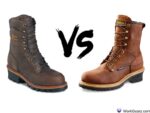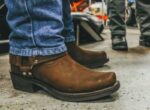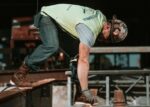Arch support is an important feature to look for in any pair of footwear. Supportive arch insoles boost physical productivity and improve foot comfort. They minimise foot fatigue and alleviate or prevent plantar fasciitis, also known as flat feet.
Almost all footwear already come with this feature but if you have a pair that doesn’t have arch support, you can additionally purchase insoles. (Best Arch Support Work Boots)
Arch support is not meant to give you pain or discomfort of any sort. But there are cases where people have complained of pain because of using insoles to support their arch. There are various reasons as to why this happens.
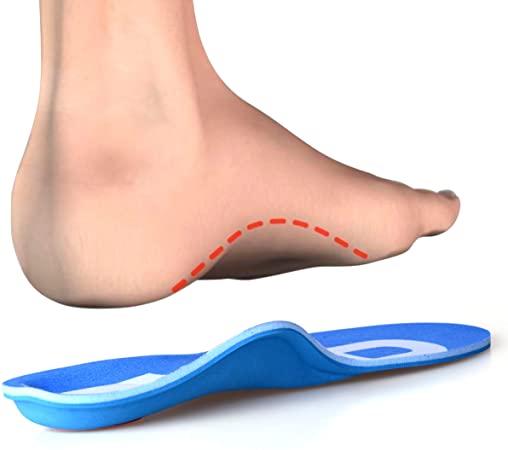
Your insoles could be hurting your feet because they’re the wrong arch height, too hard or too flexible, the wrong style for your shoes, or the arch positioning is not in proper alignment with your feet.
Let us dig into it!
Why is Arch Support Important?
1.) They provide support to your feet.
2.) They evenly distribute the weight of your body so that one particular point is not pressurized.
3.) They minimize and prevent pain or any discomfort that you can get while walking or standing for a long time.
4.) Protects your arches from any injury.
5.) Helps you balance and maintain stability.
You have to determine the sources of your foot pain. You can start by analyzing your old shoes and insoles.
If your arch feels fine wearing them, then probably your new footwear or soles are the reason. It’s preferable if you simply change one of your shoes or insoles at a time.
If you’re wondering what are the things you should consider before choosing an insole that is ideal for your arch type, then you’re at the right place. Here we will be discussing the various aspects you need to acknowledge:
The overall height of your arch
The fact that foot structure influences foot function may explain the link between arch structure and pain. Arch height is often used to define a person’s foot structure.
The most significant factor to consider when choosing an insole is arch height. The insole’s shape should mirror the shape of your foot so that your arch is adequately supported from beginning to end.
However, before you can choose the correct insole for your foot, you must first assess your arch type whether you have high or medium arches or flat feet.
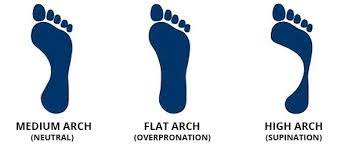
Consider your insoles once you’ve determined your arch height. Suppose you are someone who has high arches and you have purchased an insole for medium arches, then chances are you’re wearing insoles that aren’t appropriately supporting your arches and that causes extreme pain.
It will feel like there is a golf ball in your shoe or that the insole is digging into your arch if the arch height of the insole is too high for your foot.
You’ll feel like there’s too much space between the arch of the insole and your arch if it’s too low. Changing to a higher or lower insole should alleviate your discomfort in either situation.
How much mobility does it provide?
Foot arches should be mobile. As we move, jump, and run, the mobility of our arches helps to absorb impact.
Our foot is capable of making hundreds of minute adjustments to react to changing surfaces and keep our body stable, therefore arch mobility aids balance.
Arch mobility also serves as a spring, absorbing motion and supplying energy to move us forward to the next step.
This flexibility distributes weight and cushions all of the joints above the foot, reducing stresses that would otherwise be sent directly to the knees, hips, and spine.
Insole comfort is influenced by flexibility. To offer a firm arch support, some insoles use materials like carbon fibre. While this may appeal to some people for a variety of reasons, others prefer a more flexible insole.
If you’re experiencing discomfort as a result of too little or too much flex, try switching to a different insole. Podiatrists, on the other hand, prescribe a semi-rigid insole to aid in the healing of foot ailments such as plantar fasciitis.
Type of insole suitable for your feet
Full-length insoles with thick top covers are designed to fit into full-length removable insoles in running shoes, hiking boots, and other footwear. They’re made to entirely replace your shoe’s original insole.
Thin, full-length insoles with thin top covers are especially manufactured to fit into low volume footwear such as soccer, cycling and other shoes with thin, full length removable insoles.
Short insoles, often known as three-quarter insoles, are made for shoes that have no removable factory insert or one that can’t be removed, like dress shoes, ballet flats, and boat shoes.
Check that the insoles you’re wearing are compatible with the shoes you’re wearing. Insoles with too much volume for your shoes will squeeze your feet, causing discomfort.
Arch positioning
The shape of the arch is another common reason your insoles pain your feet. Some insoles focus support on the rear of the arch. Others support the arch from behind while simultaneously extending it forward to support more of the foot.
This form of assistance is more comfortable for certain people. To find an arch location that works for you, you may need to experiment with different brands of insoles.
What if you get wrong insoles for your arch?
When you get a new set of insoles, it’s usual to experience new aches, pains, and foot problems if it isn’t suitable for your arch.
Wrong insoles can cause:
Pain in the ankle: When you walk with wrong insoles, the sides of your ankles may experience a sharp pain. It may feel like shin splints, but they are on the outside or inside of each ankle.
Shin splints are a painful condition that affects the front of the shins and can spread down to the ankle or up to the knee.
Blisters: Your toes, heels, or balls of your foot may develop sensitive itchy areas or blisters all of a sudden. The tops of your toes, particularly at the base of each toenail, may become sensitive and sore.
Pain in the arch: It’s possible that your insoles are giving too much or too little arch support, causing discomfort or soreness in your arch.
Type of insoles ideal for different arch types
It’s particularly necessary for people with high arches to choose an insole that provides full arch support and reduces excessive strain on the ball and heel of the foot.
The insole’s arch should be similar to the arch of your foot. Insoles must be comfortable and resilient in order to maintain their shape throughout wear.
1.) High arch
A distinct heel cup – insoles should properly cup your heel, therefore search for a deeper heel cup for the optimum results.
Rear foot support – the rear section of the arch is the most vital for controlling pronation, thus it should be well supported (this will help with comfort!).
Arch extension – from the front to the back of the arch, the support should feel like a broad ramp, smooth and consistent.
Support that is both firm and flexible – you should be able to press the arch down but not effortlessly.
2.) Medium arch
You have the most common arch type if your arch is neither high nor low.
However, just because you have the most common arch height doesn’t mean you don’t need arch support insoles.
People with medium arches require cushioned insoles to avoid overpronation, especially if you indulge in physical activities.
You need insoles that align your ankles, knees, and hips for a more efficient stride and enhanced posture by supporting the bones of your foot.
People with medium arch height should opt for an insole that provides solid support that is tailored to their arch.
3.) Low arch (flat feet)
Many people with flat feet have no problems, but some have heel or arch pain (plantar fasciitis), swelling along the inside of their ankles, and knee and hip problems.
The best insoles for flat feet stabilise your heel and support your arch, minimising overpronation.
The finest insoles for flat feet will often have a low, but supportive arch. It’s crucial to find one that fits your foot’s contours.
While soft, cushioned insoles may appear to be the best option, structural support is actually what your feet require.
Conclusion
Arch support is important; it aids in greater muscle engagement, reduces pronation, increases shock absorption, improves posture, flexibility, reduces injuries, and provides support.
On uneven, uncertain terrains, people who wear arch support shoes have superior control and balance. However, there are some precautions to take in order to avoid foot pain and discomfort.
You must have a thorough understanding of your arch type, as well as the types of shoes and insoles to use for support and comfort.
We’ve tried to cover everything you need to know about different types of arches and insoles in this post so you’ll be ready for your next purchase.




